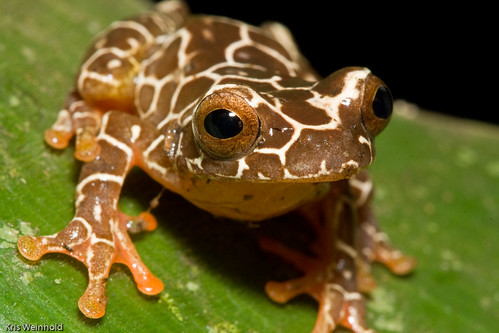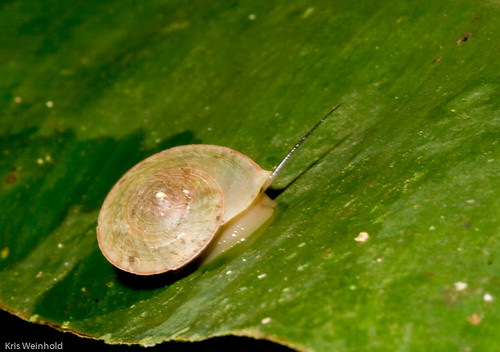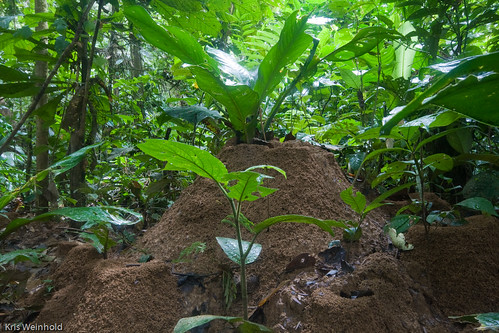Amazon Trip: The Lizards (and other reptiles)
August 23rd, 2007Around our camp in the Amazon, all sorts of lizards could be seen scurrying about. Often times, all you’d see is the flash of a tail, and then it would be gone. This pretty little lizard below was in our tent, and all around the camp.
And of course, besides your harmless little lizards, there were also black caymans around. This particular guy was brought to us by some of the local villagers nearby. It’s really amazing how long these creatures will stay in a single pose. I suppose they’re in defensive mode or something, but once they get set, they’ll barely flinch a muscle for 10 minutes straight. That’s great for long exposures in dim light!
Look at the claws on this guy below. Can you tell that he’s found in the trees? It may not be as apparent in this picture, but look to the next.

Pretty well camouflaged, isn’t he?

This was my wife’s favorite guy. He has a very beautiful blue ring around the inside of his mouth, and didn’t seem ashamed to show it. I think he’s actually a little iguana, but then again, what do I know?

And, just like the various insects, there are lizards that look like leaves down in the jungle. This lizard is about 6-8″ inches long, and if you weren’t looking closely, you’d likely miss him on the forest floor.
Here’s a semi-aquatic, semi-terrestrial turtle that was brought to us. He doesn’t look much different from a lot of the turtles we see in the United States, but still very cool. And unlike some of the turtles around me, this guy would not stay put in his shell. I had more trouble getting him to sit still then I think I’ve ever had with a turtle. Aren’t they supposed to be slow?
Finally, we were fortunately to locate both a male and female of the same species below. Of course, I don’t remember which is which, but you can see how the patterns on their back are entirely different.
I think I prefer the spotted pattern of the one below, to the barred one above, but they’re both pretty darn fun to look at. And check out their eyes!

Oh, and their teeth! This might be my favorite shot from the trip. I hope you like it.
Besides a few odds and ends that I might throw in, I think this is the last set of nature pictures I’m going to post from our trip. If you’d like to see more general descriptions of our travels, you can read about them on my wife’s blog.
























































